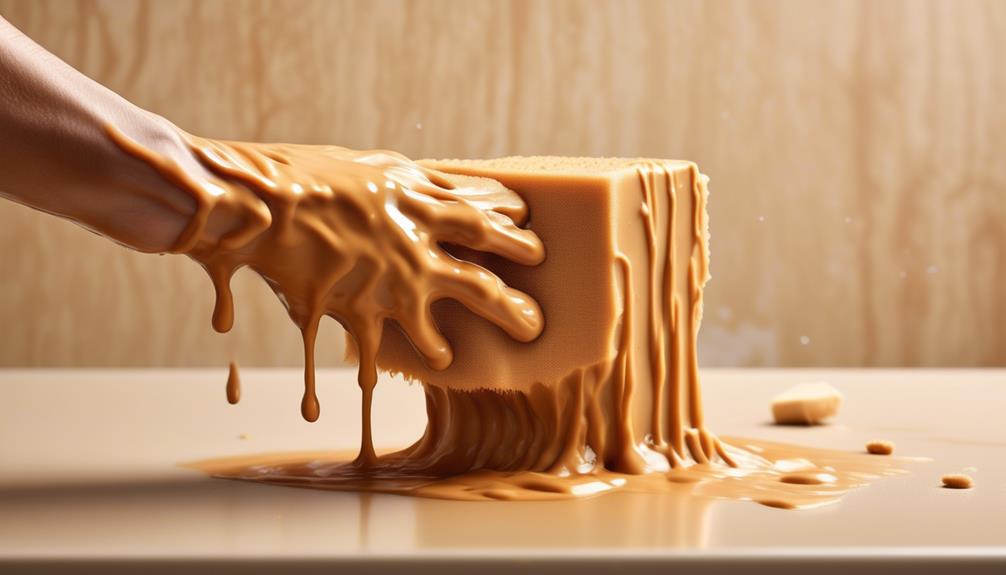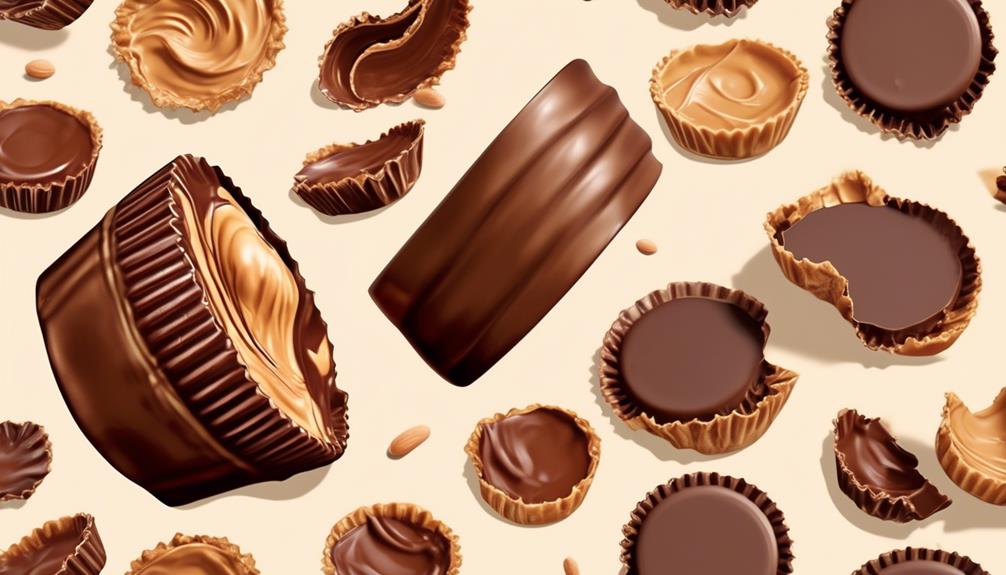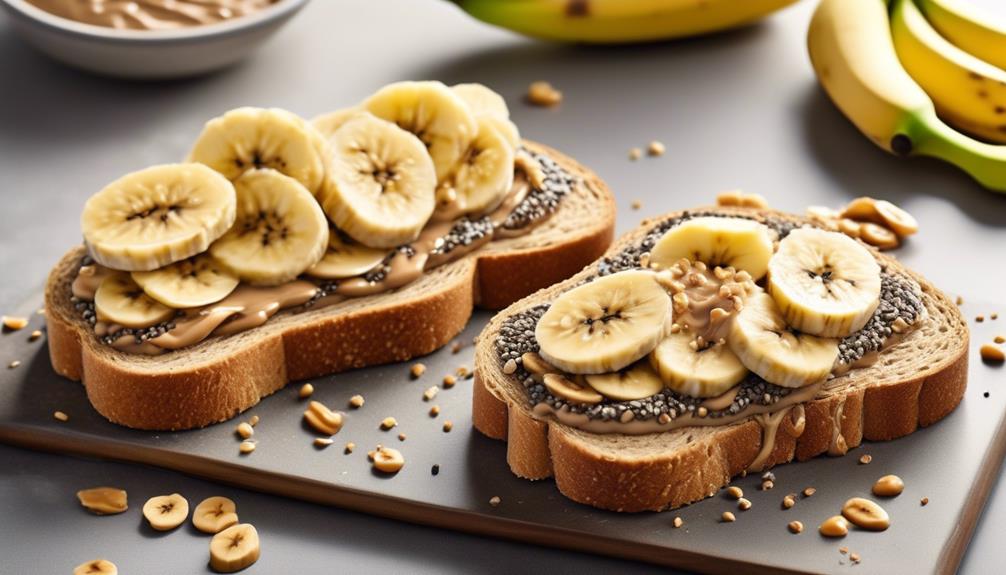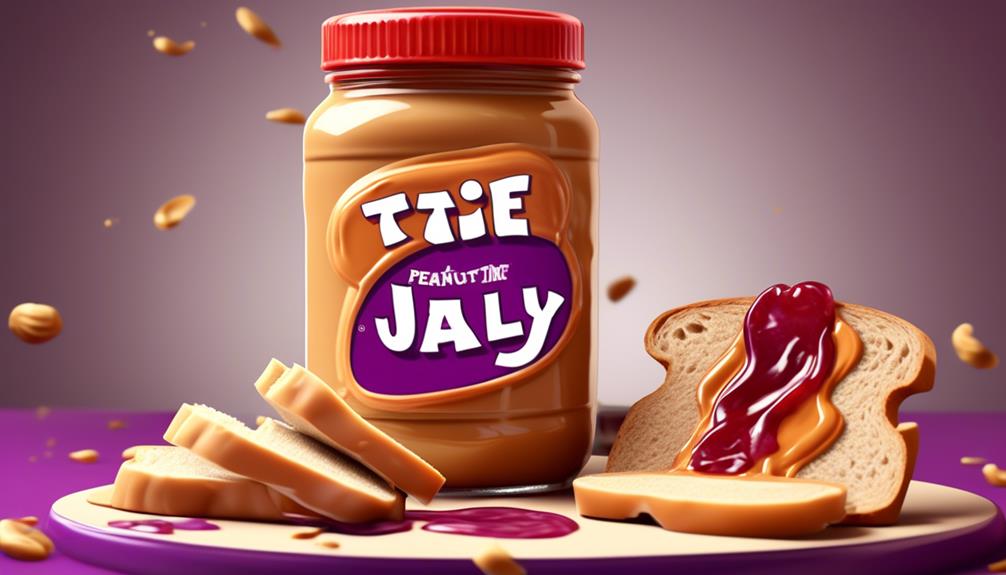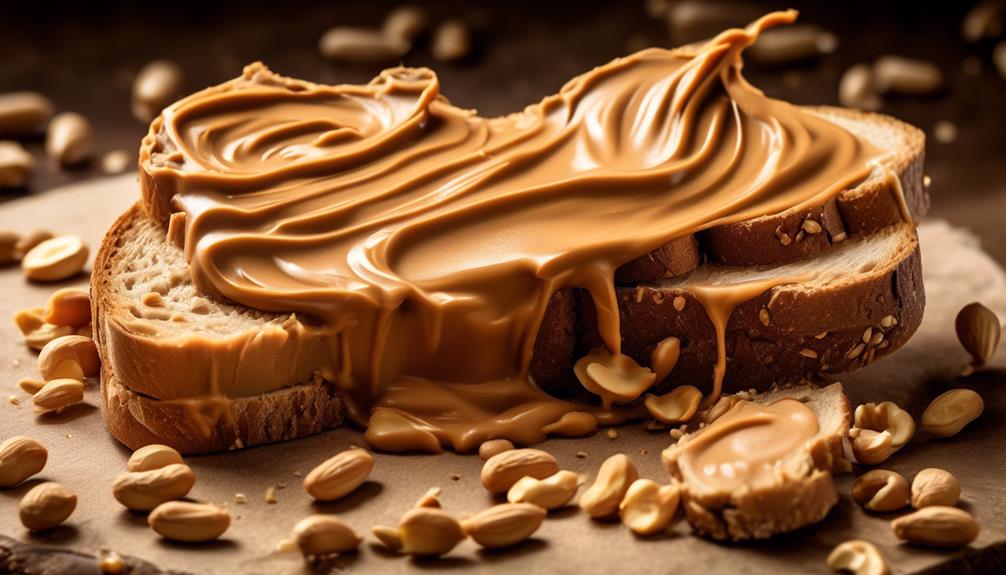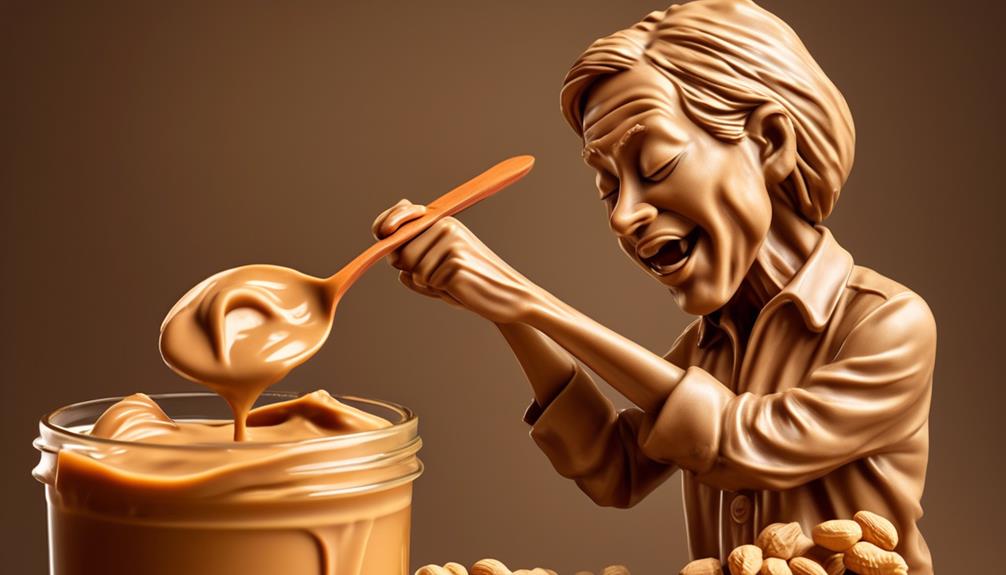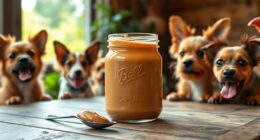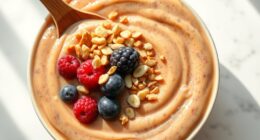When it comes to cleaning up peanut butter, finding the right method can feel like looking for a needle in a haystack. With numerous options and techniques to choose from, it can be difficult to pinpoint the most effective approach.
But fear not, because we're here to shed light on the best ways to tackle this sticky situation. Whether it's the classic soap and water method or some surprising hacks involving household items, we've got you covered.
Stick around to discover the most efficient way to bid farewell to peanut butter residue, and say hello to spotless surfaces.
Key Takeaways
- There are various cleaning methods for peanut butter messes, including the soap and water method, vinegar solution, and the egg technique.
- When involving pets in cleanup, it is important to use pet-friendly cleaning products and train them to help with positive reinforcement. Preventing pet messes is also crucial.
- Strategies for involving pets in cleaning peanut butter messes include offering them the peanut butter-smeared jar or utensil to lick clean, using pet-friendly cleaning agents, and making the cleaning process interactive and enjoyable.
- Effective human treatments for cleaning up peanut butter messes include scraping off excess peanut butter, emulsifying it with soap, and using paper towels for thorough cleaning. It is also helpful to coat the container with water before adding peanut butter.
Soap and Water Method
We use the soap and water method to effectively remove peanut butter residue from dishes and utensils. This method involves scraping off any excess peanut butter. Then, adding a drop of dish soap to hot water to create a soapy solution.
Once the soapy solution is prepared, we securely close the container and shake it vigorously. This shaking action helps emulsify and lift off the peanut butter residue, ensuring a thorough cleaning process.
The soap and water method is particularly useful for recycling peanut butter jars, as it guarantees that they're clean and ready for reuse. Its simplicity and efficiency make it a preferred choice for cleaning peanut butter-contaminated items.
Vinegar Solution

We've found that vinegar solution is an excellent natural cleaning agent for removing peanut butter residue. It's effective in breaking down the oily and greasy elements of peanut butter from surfaces and utensils, making it a valuable alternative to dish detergent.
Additionally, the application of vinegar solution, when mixed with hot water and left to sit, can help eliminate peanut butter residue from jars and dishes.
Vinegar's Cleaning Properties
Vinegar's cleaning properties make it an effective and eco-friendly solution for dissolving and removing stubborn peanut butter residue from surfaces and utensils. When using vinegar to clean up peanut butter, consider the following:
- Pour about 1/4 cup of vinegar into the jar and add hot water, allowing it to sit for an hour to help dissolve the peanut butter.
- Regularly shaking the jar with the vinegar solution can aid in breaking down and removing the peanut butter residue effectively.
- The use of vinegar solution is an eco-friendly and cost-effective method for cleaning up peanut butter.
Vinegar's acidic nature helps in breaking down the fats and oils present in peanut butter, making it easier to remove stains and residue. Additionally, it's a safe and natural alternative that's gentle on surfaces while effectively cleaning up peanut butter.
Application on Peanut Butter
After understanding vinegar's cleaning properties in dissolving peanut butter residue, we can now explore its practical application in the removal process. The table below provides a step-by-step guide on how to effectively use a vinegar solution to clean up peanut butter from a jar:
| Step | Instructions |
|---|---|
| Mix vinegar and hot water | Combine vinegar and hot water in the jar to dissolve peanut butter residue. |
| Let the solution sit for an hour | Allow the solution to sit for an hour, occasionally shaking the jar. |
| Use vinegar as a natural alternative | The vinegar solution works as a natural alternative to dish detergent. |
| Rinse thoroughly | After soaking, rinse the jar thoroughly to remove any remaining residue. |
| Eco-friendly recycling | This method is eco-friendly and helps in effectively recycling the jar. |
This method not only effectively removes peanut butter but also promotes eco-friendly practices by recycling the jar.
Effectiveness and Safety
When using the vinegar solution for cleaning peanut butter residue, it's important to consider its effectiveness and safety.
The vinegar's acidic properties make it an effective option for removing peanut butter residue from dishes. It helps to break down and dissolve the oily and sticky remnants, making it easier to remove.
Additionally, using a vinegar solution is a safe and natural alternative to harsh chemical cleaners, reducing the risk of exposure to harmful substances. It's also environmentally friendly and can be used on various surfaces without causing damage.
However, it's important to ensure proper ventilation when using vinegar to clean, especially in enclosed spaces.
The Egg Technique

Using eggshells to scrub off peanut butter residue from jars and utensils is a natural and effective cleaning method known as the Egg Technique. When combined with hot water and a little dish soap, the abrasive texture of the eggshells helps to loosen and remove stubborn peanut butter residue. To illustrate the effectiveness of the Egg Technique, consider the following table:
| Pros | Cons |
|---|---|
| Natural method | Requires eggshells |
| Environmentally friendly | Additional step of straining water |
| Effective at removing residue | |
As you can see, the Egg Technique offers several advantages. It is a natural, environmentally friendly method that effectively removes peanut butter residue, reducing the need for harsh chemicals. While it does require eggshells and an additional step of straining the water, the benefits of using this method outweigh the minor inconveniences. By incorporating a little dish soap with the eggshells and hot water, you can enhance the cleaning power and ensure that your jars and utensils are thoroughly cleaned. The Egg Technique is a simple yet powerful way to tackle peanut butter residue, leaving your kitchenware sparkling clean.
Involving Pets in Cleanup

When it comes to involving pets in the cleanup of peanut butter, there are several important points to consider.
First, using pet-friendly cleaning products is crucial to ensure the safety of our furry friends.
Second, training pets to help with cleanup can be a rewarding and interactive experience, but it's important to do so in a safe and controlled manner.
Pet-Friendly Cleaning Products
Pet owners should prioritize using non-toxic and natural ingredients in cleaning products to ensure the safety and well-being of their animals during cleanup. When dealing with peanut butter messes, it's crucial to opt for pet-friendly cleaning products.
Here are some key considerations for selecting the right products:
- Look for natural ingredients such as vinegar, baking soda, and citrus extracts in pet-friendly cleaning products.
- Avoid cleaning products with harsh chemicals, artificial fragrances, and dyes that could be harmful to pets.
- Consider using enzymatic cleaners specifically designed to break down pet stains and odors effectively.
Training Pets to Help
As we consider involving our furry companions in the cleanup process, it's crucial to prioritize their safety and well-being by choosing non-toxic and natural cleaning methods, especially when dealing with peanut butter messes.
Training pets to help with cleanup can be both beneficial and enjoyable. Engaging pets in cleaning by giving them the jar to lick clean can be a fun and effective way to involve pets in the process. However, it's important to ensure that the jar opening isn't sharp and to supervise the activity.
This can be a rewarding activity for both pet and owner, as it provides mental stimulation for the pet and helps keep the living space clean. When involving pets in cleanup, always consider their safety and preferences, and use positive reinforcement to encourage their participation.
Preventing Pet Messes
Encouraging pets to participate in the cleanup process can be a rewarding and beneficial way to involve them in maintaining a clean living space. When it comes to preventing pet messes involving peanut butter, there are several effective strategies to consider:
- Offer your pet a peanut butter-smeared jar or utensil to lick clean, involving them in the cleanup process while also providing a tasty reward.
- Utilize pet-friendly cleaning agents such as vinegar or soap and water, ensuring a safe environment for your pet to participate in cleaning activities.
- Train your pet to assist in cleaning by using positive reinforcement and rewards, creating a positive association with cleaning up peanut butter messes.
Incorporating these methods can make cleaning up pet messes an interactive and enjoyable experience for both you and your pet.
Effective Human Treatments

To effectively clean up peanut butter messes, it is recommended to scrape off any excess peanut butter, emulsify it with soap, and use paper towels for thorough cleaning. Emulsification helps break down the fatty components of peanut butter, making it easier to remove. Here is a comparison of different cleaning methods:
| Cleaning Method | Effectiveness |
|---|---|
| Scraping off excess | Very effective |
| Emulsifying with soap | Highly effective |
| Using paper towels | Essential for thoroughness |
These methods work together to effectively remove peanut butter from surfaces, ensuring a clean environment. Additionally, coating the container with water before adding peanut butter can aid in reducing residue left behind. General tips such as using disposable portion cups and opting for heavily processed peanut butter can also make clean-up easier. Specific cleaning techniques include using baby wipes, selecting the right bowl or plate, choosing suitable serving options, and considering safety measures. By following these recommendations, individuals can ensure that peanut butter messes are effectively and efficiently addressed.
Old-Fashioned Peanut Butter Hacks

After discussing effective human treatments for cleaning up peanut butter, we can now explore some old-fashioned peanut butter hacks that offer alternative methods for tackling peanut butter messes.
- Use paper towels to effectively scrape off peanut butter residue from dishes and utensils.
- Emulsify the peanut butter with soap thoroughly before rinsing to aid in cleaning.
- Scraping the majority of the fat into the garbage before applying soap can help in cleaning peanut butter.
Old-fashioned peanut butter hacks provide simple yet effective ways to deal with peanut butter messes. Using paper towels to scrape off residue from dishes and utensils can be a quick and efficient method. Emulsifying the peanut butter with soap before rinsing can aid in breaking down the oils and fats, making it easier to clean. Scraping off the majority of the fat before applying soap can also help in effectively cleaning peanut butter.
These methods offer alternative approaches to cleaning up peanut butter, using everyday items and techniques that have stood the test of time.
Pre-Treating Peanut Butter Stains

Pre-treating peanut butter stains is an essential step in effectively removing them from fabric surfaces.
To begin, scrape off any excess peanut butter with a butter knife or spoon.
Then, pre-treat the stain by applying a small amount of liquid dish soap or laundry detergent directly onto the affected area.
Gently rub the soap in and allow it to sit for 10-15 minutes.
After pre-treating, rinse the stained area under cold running water, ensuring to push the stain out from the backside of the fabric to prevent it from setting deeper.
Next, dampen a clean cloth with white vinegar and gently blot the stain, followed by another rinse with cold water.
Finally, launder the garment as usual, using the recommended water temperature and detergent.
Before drying, check the stained area to ensure complete removal.
Following these pre-treating steps is crucial for effectively tackling peanut butter stains and ensuring that fabric surfaces are restored to their original condition.
Enzyme-Based Stain Removers

Having discussed the importance of pre-treating peanut butter stains, it's valuable to explore the effectiveness of enzyme-based stain removers in breaking down and removing stubborn peanut butter residues from fabric surfaces.
Enzyme-based stain removers contain specific enzymes that break down proteins, oils, and fats found in tough stains like peanut butter, making them effective for removing peanut butter stains.
These stain removers work by targeting and breaking down the molecular structure of the peanut butter residue, making it easier to lift off surfaces and fabrics.
Enzyme-based stain removers are safe for use on various surfaces and fabrics, providing a gentle yet powerful solution for cleaning up peanut butter messes.
Enzyme-based stain removers offer a scientifically proven and convenient solution for tackling peanut butter stains on clothing, upholstery, dishes, and other surfaces. Their ability to target and break down the molecular structure of peanut butter residues makes them effective for removing these stubborn stains. It's important to follow the manufacturer's instructions for best results, including allowing the product to sit on the stain for the recommended time before laundering or wiping clean.
Dealing With Residual Peanut Proteins

Dealing with residual peanut proteins requires specific cleaning methods to effectively remove the stubborn residues left behind. Peanut butter's oily nature makes it challenging to dissolve in hot water, and even after using the dishwasher, residue can still be left on dishes, necessitating additional cleaning techniques. The lingering peanut butter residue not only contaminates other dishes and dishwater but also tends to gunk up cleaning devices such as sponges and brushes, demanding thorough cleaning after use.
| Cleaning Method | Description | Emotional Impact |
|---|---|---|
| Hot Soapy Water | Effectively dissolves peanut butter | Frustration |
| Vinegar Solution | Cuts through oily residue left behind | Annoyance |
| Baking Soda Paste | Helps scrub away stubborn residue | Disappointment |
These challenges in dealing with peanut butter residue highlight the need for specific and effective cleaning methods. The frustration, annoyance, and disappointment caused by the stubborn residue left behind evoke a strong emotional response, emphasizing the importance of finding practical solutions for this common household cleaning dilemma. If you need information on specific cleaning methods or solutions for dealing with peanut butter residue, please feel free to ask.
Frequently Asked Questions
What Washes Down Peanut Butter?
Warm water and dish soap effectively wash down peanut butter residue. It's a simple and efficient way to clean up after enjoying peanut butter.
Using a rubber spatula to scrape off excess peanut butter before rinsing with hot water can simplify clean-up.
Vinegar mixed with hot water can serve as a natural cleaning agent to remove peanut butter residue.
These methods work wonders for cleaning up peanut butter messes.
What Removes Peanut Butter Stains?
When it comes to removing peanut butter stains, it's important to tackle the oily residue effectively.
We've found that using a combination of dish soap and hot water works wonders. The soap helps to break down the oils, while hot water helps to dissolve and wash away the peanut butter.
This method ensures that the stains are effectively removed, leaving dishes clean and residue-free.
What Will Dissolve Peanut Butter?
We've found that hot water and dish soap can effectively dissolve peanut butter residue. It's important to thoroughly emulsify the peanut butter with soap before rinsing.
Additionally, scraping off the majority of the fat into the garbage before cleaning can make the process easier. Using disposable portion cups and heavily processed peanut butter can also simplify clean-up.
These methods have proven successful in our experience.
Why Is Peanut Butter Hard to Clean?
Why is peanut butter hard to clean?
Well, it's due to the oily nature of peanut butter, which makes it stubborn to dissolve in hot water. This residue can linger on dishes even after using the dishwasher, requiring additional cleaning.
The oil in peanut butter can contaminate other dishes and dishwater, making it a challenge to clean.
Additionally, peanut butter can gunk up cleaning tools, making them less effective.
Conclusion
In conclusion, when it comes to cleaning up peanut butter, there are a variety of effective methods to ensure thorough removal of residue and proteins.
From the traditional soap and water method to the innovative use of enzyme-based stain removers, there are plenty of options to choose from.
By following proper cleaning practices, we can create a safe environment, free from the risk of allergen exposure, and enjoy our favorite peanut butter treats with peace of mind.
